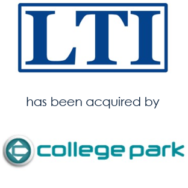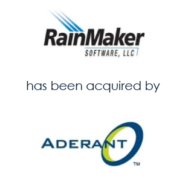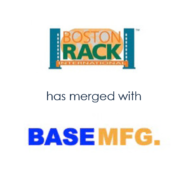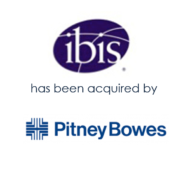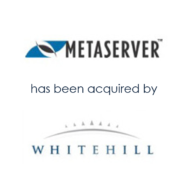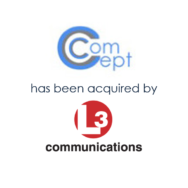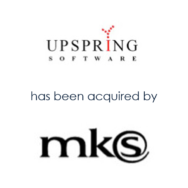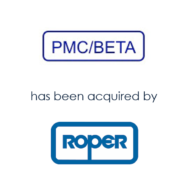Glossary of Insolvency and Bankruptcy Terms
A B C D E F G H I J K L M N O P Q R S T U V W X Y Z
A
§363 Sale
A sale of assets by a debtor, with the approval of the Bankruptcy Court, is effected pursuant to section 363 of the Bankruptcy Code. Therefore, any sale of a business or its assets out of a bankruptcy is commonly referred to as a §363 sale. “Bankruptcy Sale” and “§363 sale” are synonymous.
Administrative Claims
Admin claims include claims by professionals retained in the bankruptcy case, such as attorneys, turnaround consultants, investment bankers, etc. If the bankruptcy does not produce adequate liquidity through the sale of assets or other actions to repay all secured claims plus administrative claims, the bankruptcy estate is deemed “administratively insolvent”. This happens with some frequency, which is why it is important for professionals to get a “carve-out” from the secured creditors.
Article 9 Proceeding
In lieu of allowing the debtor to file for Bankruptcy, a secured creditor may elect to foreclose on their collateral (the debtor’s assets) and liquidate the assets in order to repay their claim. Article 9 proceedings are a state court proceeding, and therefore the venue is an important consideration for the lender (some states are more debtor-friendly than others). Generally, the creditor(s) need to have a compelling reason (such as the avoidance of massive legal fees in a Chapter 11) to pursue an Article 9 transaction, and will only do so if it will lead to a significantly better recovery than the alternatives.
“ABC”
(Assignment for the Benefit of Creditors) In lieu of filing for Bankruptcy (Chapter 7 in the case of a proposed liquidation), a company may elect to make an assignment (of its assets) for the benefit of creditors (colloquially known as “handing over the keys”). In this situation, the priority creditor(s), typically the bank, would take control of the company’s assets and liquidate them as payment for their claim. Generally, the creditor(s) need to consent in advance to such assignment, otherwise the officers of the company may have personal liability for what happens to the assets when they “hand over the keys”.
Assume (as in assume an obligation)
An agreement to continue performing duties under a contract or lease. In the context of an M&A transaction, if the buyer “assumes” certain contracts, such as a real estate lease or a lease for equipment, that assumption reduces the total obligations of the bankruptcy estate.
Automatic stay
An injunction that automatically stops lawsuits, foreclosures, garnishments, and all collection activity against the debtor the moment a bankruptcy petition is filed. The timing of most bankruptcies is geared toward triggering the automatic stay in order to avoid a lawsuit or other action against the Company.
B
Bankruptcy
A legal procedure for dealing with debt problems of individuals and businesses; specifically, a case filed under one of the chapters of title 11 of the United States Code (the Bankruptcy Code).
Bankruptcy Code
The informal name for title 11 of the United States Code (11 U.S.C. §§ 101-1330), the federal bankruptcy law.
Bankruptcy Estate
Once a Company files for “Bankruptcy” (typically meaning bankruptcy protection under the terms of Chapter 11, which enable the company to continue to operate with Bankruptcy Court approval), the Company is officially known as the “Debtor”, and the bankruptcy estate (or “debtor’s estate) is defined as all legal or equitable interests of the debtor in property at the time of the bankruptcy filing. The estate includes all property in which the debtor has an interest, even if it is owned or held by another person. Therefore the Court’s power to “disgorge” or unwind any transfers of cash or assets that occurred immediately prior to the filing.
Bankruptcy Petition
When the company “files for bankruptcy”, the actual document filed by the debtor (in a voluntary case) or by creditors (in an involuntary case) that opens the bankruptcy case is the petition. (There are official forms for bankruptcy petitions, available for download on most court clerks’ web sites.)
C
Carve-Out
Secured claims get priority in any bankruptcy settlement, followed by post-petition administrative claims. Pre-petition unsecured claims, such as would be owed to an investment banker who earned a portion of their fee prior to the filing, would be at the end of the line. Therefore, it is important for Mirus to get a carve-out from the secured creditor(s) at the time of the engagement. The carve-out is a contractual agreement with the secured creditor(s) whereby they agree to pay our fee out of their recovery in the event that (a) we complete a transaction and earn the fee; and, (b) the estate is administratively insolvent or for whatever reason our fees are not immediately approved.
Chapter 7
A Chapter 7 case is a liquidation proceeding, available to individuals, married couples, partnerships and corporations. For a business, Chapter 7 generally connotes that the business has “shut its doors” and therefore given up on any chance of realizing “going concern value” for the business.
Chapter 11
“Chapter 11” is a reorganization proceeding in which the debtor may continue in business or in possession of its property as a fiduciary. A Chapter 11 proceeding will typically go one of three ways: (1) a sale of assets (a §363 sale), whereby the proceeds of the sale are to be used to satisfy the debt; (2) A confirmed Chapter 11 plan that provides for the manner in which the debtor will repay the claims of creditors in whole or in part over time; or (3) a conversion to a Chapter 7 (in the event options 1 and 2 don’t pan out) followed by a liquidation of assets. Chapter 13 A repayment plan, most common for individuals with debts falling below statutory levels. This is typically a personal bankruptcy (although many smaller S-Corporations may qualify) which provides for repayment of some or all of the debts out of future income over 3 to 5 years.
Collateral
Property that is subject to a lien (or a secured interest) by a creditor. A creditor with rights in collateral is a secured creditor and has additional protections in the Bankruptcy Code for the claim secured by collateral. The measure of the secured claim is the value of the collateral available to secure the claim: therefore, if the lender provided equipment financing for a $5 million manufacturing line, and the liquidation value of that equipment is $1 million, then the value of that secured lien is reduced to the $1 million (or whatever value is ultimately achieved in a sale of that asset). In the event that the allocation of purchase price to a specific asset that is collateral is deemed “insufficient” – the creditor can object to the sale – and remove the asset from the estate (subject to court approval).
Confirmation
The court order which makes the terms of the plan for repayment of debts in a Chapter 11 binding. The terms of the confirmed plan control over all pre-existing contracts or obligations as between the debtor and creditor.
Creditor
The person(s) or organization(s) to whom the debtor owes money or some other form of legal obligation.
Cramdown
If the creditors do not approve a plan of reorganization, the court may still approve it, if the bankruptcy judge believes it is in the best interest of all parties. Normally a cramdown involves reducing a secured creditor’s debt to the fair market value of the property, with the balance of the debt determined to be unsecured.
Claim
A creditor’s assertion of a right to payment from the debtor or the debtor’s property. An “Allowed” claim is a claim that has been adjudicated by the Court to be valid and in most cases subject to immediate disbursement from the debtor’s account – and not subject to further dispute. For example, when we file a fee application (to get paid for our services) we are filing a claim. When the judge signs an order allowing us to get paid, it becomes an “Allowed Claim.” If the estate is administratively insolvent (as in the case of Envisionet) then our Allowed Claim doesn’t get paid unless and until enough dollars come in to make the case solvent.
Committee (also “The Official Committee of Unsecured Creditors”)
Early in the Bankruptcy process, the U.S. Trustee will notify all of the unsecured creditors of a meeting (or conference call) at which the creditors will form an Official Committee of Unsecured Creditors. This Committee will then appoint an attorney (Committee Counsel) to act on their behalf.
Committee Counsel
The attorney appointed by the Official Committee of Unsecured Creditors to represent the interest of all general unsecured creditors in the bankruptcy proceeding. If there is insufficient interest to constitute a Committee, then the U.S. Trustee may stand in.
Creditors’ Meeting (also 341 meeting)
The 341 meeting is a meeting of creditors required by section 341 of the Bankruptcy Code at which the debtor is questioned under oath by creditors, a trustee, examiner, or the U.S. trustee about his/her financial affairs. Also called creditors’ meeting.
D
Debtor
A person, company, or legal entity that has filed a petition for relief under the Bankruptcy Code.
Debtor-in-Possession
A debtor that has been given approval by the Bankruptcy Court to continue to operate a business and act essentially as their own trustee.
Debtor-in-Possession Financing (or “DIP” financing)
A short-term debt financing that provides the debtor in possession with new working capital to operate the business. The DIP financing is often contentious, as it “deepens the insolvency” of the debtor – essentially it is like giving a person who is bankrupt a new credit card in order to continue living a normal life while all of their “old” creditors wait around to be paid. Also, the DIP is usually given a super-priority status –meaning that any new money coming into the estate can be used to repay the DIP first.
E
ECF (Electronic Case Filing)
CM/ECF is the federal courts’ case management and electronic case files system. It provides courts enhanced and updated docket management. It allows courts to maintain case documents in electronic form. And it gives each court the option of permitting case documents — pleadings, motions, petitions — to be filed with the court over the Internet. CM/ECF implementation in the bankruptcy courts has been underway since early 2001. https://pacer.login.uscourts.gov/cgi-bin/login.pl?court_id=00idx
Executory Contracts
Generally includes contracts or leases under which both parties to the agreement have duties remaining to be performed. If a contract or lease is executory, a debtor may assume it or reject it. By rejecting an executory contract (with Court approval) the debtor can get out of a union labor contract, a lease for unwanted office space, or other obligations that would otherwise prevent the company from operating at a profit and repaying its debts.
F
First Day Motions
When the Bankruptcy Petition is filed, the debtor’s counsel will also file a raft of motions with it – collectively referred to as the “first day motions.” These will typically include a motion to approve the use of cash collateral, which is the essential motion to ensure that the Company will be able to operate during the Bankruptcy process.
“Free and Clear”
A characterization of assets sold by a debtor in a bankruptcy proceeding, meaning free and clear of obligations, liens or encumbrances. The concept of buying assets “free and clear” – which in most cases include freedom from successor liability – is what makes the acquisition of assets from a bankruptcy sale especially attractive.
Fraudulent Transfer
Any transfer of assets (including cash bonuses, severance payments, or a sale of assets) made within 12 months prior to a bankruptcy filing, or within the “zone of insolvency” can be reviewed by the Bankruptcy Court and if deemed inappropriate in hindsight, may be classified as a Fraudulent Transfer. In such case, the receiver of the assets can be compelled by the court to return the assets to the estate.
Fresh Start
The characterization of a debtor’s status after bankruptcy, i.e., free of most debts. (Giving debtors a fresh start is one purpose of the Bankruptcy Code.)
G
“General, Unsecured Claims”
Claims (debts) that do not fall into the administrative or secured category. Trade payables, unpaid employee expense reimbursements, company credit cards, and the like are unsecured claims. If the bankruptcy has funds, after paying administrative and priority claims, then unsecured claims will receive a pro-rata payment.
I
Insolvency
If a business is operating in a manner that is unsustainable given their earnings and financing arrangements (such as a business which is losing millions every month and will soon be out of cash), it may be insolvent. However, insolvency is to some degree subjective, as that same business may be on the verge of receiving a new round of venture capital, completing an IPO, or some other event that will provide new capital.
L
Liquidation
A sale of a debtor’s property with the proceeds to be used for the benefit of creditors.
N
New Value
Any professional providing services to the debtor post-petition (meaning “during the bankruptcy”) may be paid current for their services to the extent they are bringing “new value” to the estate. However, any claims by those professionals (whether they be the investment banker, the attorney, etc.) arising from pre-petition claims can only be paid as a general, unsecured claim.
P
Parties in Interest
Those parties who have standing to be heard by the court in a matter to be decided in the bankruptcy case. The debtor, the U.S. Trustee, and the creditors are parties in interest for most matters. It is the obligation of the debtor to notify all parties in interest of the bankruptcy, and there is a standard 20-day notification policy in place for most significant motions, such as a motion to sell assets (which is why most bankruptcy sales require 20+ days to complete).
Perfection (also “a Perfected Lien”)
When a secured creditor has taken the required steps to perfect his lien, the lien is senior to any liens that arise after perfection. For example, filing a financing statement with the secretary of state perfects a lien in personal property. An unperfected lien is valid between the debtor and the secured creditor, but may be behind liens created later in time, but perfected earlier than the lien in question.
“Pre-Pack” (also “Pre-Packaged Bankruptcy Sale”)
There are several variations of this concept, but the general idea is that the company and a buyer will agree to terms in advance that both parties believe will be acceptable to all of the company’s creditors. Once the agreement is made in principal, then the company files for Chapter 11, and simultaneously files a motion for approval of a plan of reorganization that details (a) the sale of assets; (b) the repayment of debt – in whole or in part; and (c) provision for administrative claims. In reality, it is difficult to get all of the creditors to agree in advance – particularly when it would require certain creditors to accept 10 cents on the dollar. If any creditor objects, then the court may not allow the sale to move forward without a trial (or in some cases an auction), which takes longer and costs more money.
Preferences (or preferential debt payments)
A debt payment made to a creditor in the 90-day period before a debtor files bankruptcy (or within one year if the creditor was an insider) that gives the creditor more than the creditor would receive in the debtor’s bankruptcy case. Examples include investment banking fees paid prior to filing, management stay bonuses paid prior to filing, and even employee bonuses paid as many as 12 months prior to filing, etc. (In the case of Transcept, the court went after bonuses paid to management in the ordinary course – seven months prior to filing).
Priority
The Bankruptcy Code’s statutory ranking of unsecured claims that determines the order in which unsecured claims will be paid if there is not enough money to pay all unsecured claims in full. For example, under the Bankruptcy Code’s priority scheme, money owed to the case trustee or for pre-petition employee compensation (including vacation and sick time in some states) must be paid in full before any general unsecured debt (i.e. trade debt or credit card debt) is paid.
S
Secured Creditor
A creditor holding a claim against the debtor who has the right to take and hold or sell certain property of the debtor in satisfaction of some or all of the claim. Banks, Sub-Debt, and Bond Holders are generally “secured” creditors.
Statement of financial affairs
A series of questions the debtor must answer in writing concerning sources of income, transfers of property, lawsuits by creditors, etc. (There is an official form a debtor must use.)
T
Transfer
Any mode or means by which a debtor disposes of or parts with his/her property.
Trustee
The representative of the bankruptcy estate who exercises statutory powers, principally for the benefit of the unsecured creditors, under the general supervision of the court and the direct supervision of the U.S. trustee or bankruptcy administrator. The trustee is a private individual or corporation appointed in all chapter 7, chapter 12, and chapter 13 cases and some chapter 11 cases. The trustee’s responsibilities include reviewing the debtor’s petition and schedules and bringing actions against creditors or the debtor to recover property of the bankruptcy estate. In chapter 7, the trustee liquidates property of the estate, and makes distributions to creditors. Trustees in chapter 12 and 13 have similar duties to a chapter 7 trustee and the additional responsibilities of overseeing the debtor’s plan, receiving payments from debtors, and disbursing plan payments to creditors.
U
U.S. Trustee
An officer of the Justice Department responsible for supervising the administration of bankruptcy cases, estates, and trustees; monitoring plans and disclosure statements; monitoring creditors’ committees; monitoring fee applications; and performing other statutory duties. As far as Mirus is concerned, the U.S. Trustee is the chief adverse party to our engagement terms until such time that the Official Committee of Unsecured Creditors is constituted and they appoint Committee Counsel.
Undersecured Claim
A debt secured by property that is worth less than the full amount of the debt.
W
WARN Act
The Worker Adjustment and Retraining Notification Act (WARN Act) is a United States law protecting employees by requiring most employers with 100 or more employees to provide 60 calendar-day advance notification of plant closings and mass layoffs of employees. Employees entitled to notice under the WARN Act include managers and supervisors, hourly wage, and salaried workers. The WARN Act requires that notice also be given to employees’ representatives (i.e. a labor union), the local chief elected official (i.e. the mayor), and the state. The purpose of the advance notice is to give workers transition time to seek and obtain other employment, avoid homelessness, etc. If adequate notice is not given, then the company can be held responsible for paying equivalent wages for the notice period, and if the company can’t pay, then the Board and/or the executive officers of the company can be held personally liable.
Z
“Zone of Insolvency”
Once a business is operating in the “Zone of Insolvency”, the fiduciary responsibility of the board of directors and the executive team shifts from protecting the interests of shareholders to protecting the interests of their creditors. This is a challenge for most boards and executives, as they themselves are typically large equity holders. However, if a CEO makes the mistake of “swinging for the fences” while in the Zone of Insolvency, they may be personally (and even criminally) liable. An example would be if the CEO refused to cut staff and thereby continued to operate at a loss because he expected to complete a sale of the business in the near term. If that sale process falls through, then in the process the CEO has “deepened the insolvency” at the expense of the creditors, and may be found to be in breach of their fiduciary responsibility. In the example of both Transcept and Envisionet, the companies were operating at a loss under the premise that they would soon receive new venture capital investment. At the moment that the company realized that such investment was unlikely to come in prior to running out of cash, the company was in “the Zone of Insolvency.” In retrospect, the company was already in the Zone of Insolvency before acknowledging that fact, but when it entered the Zone is a subject of debate.
Back to top






























